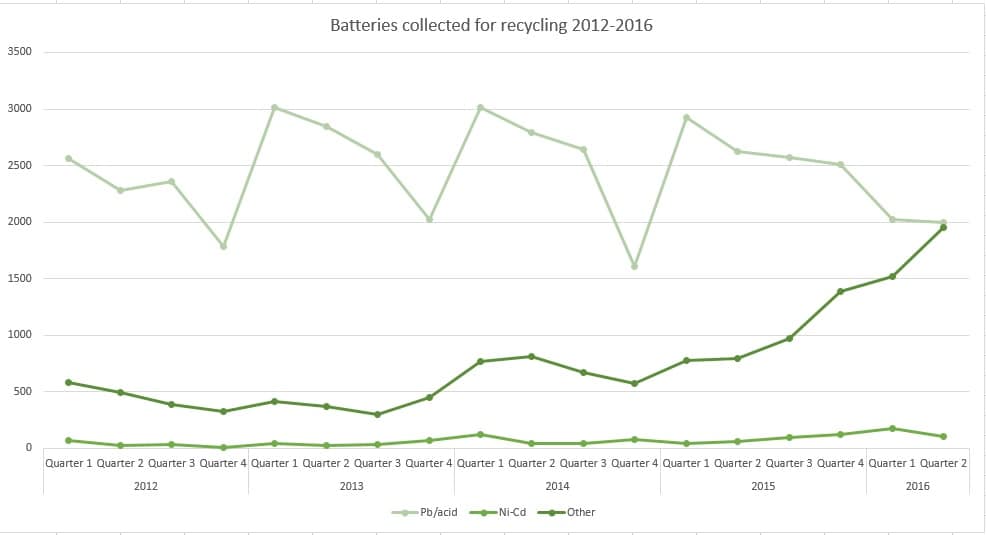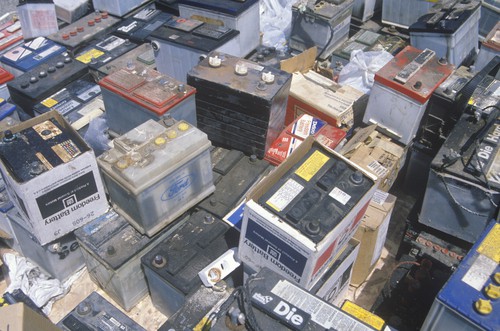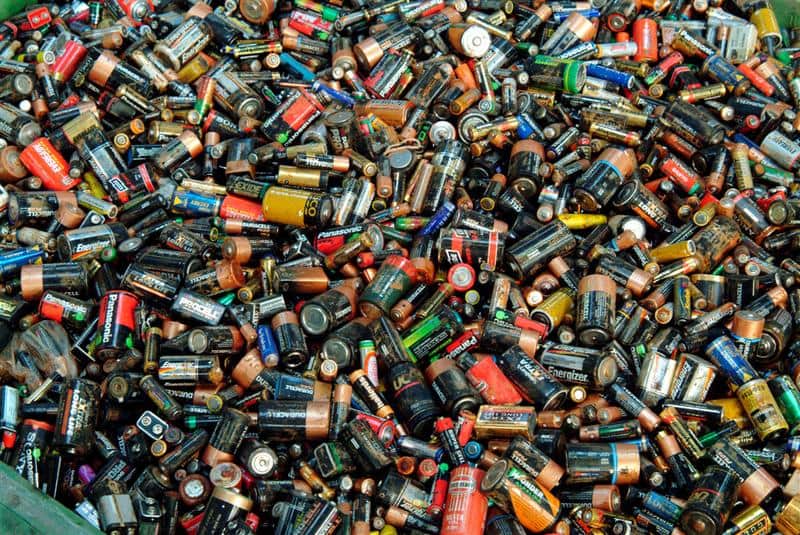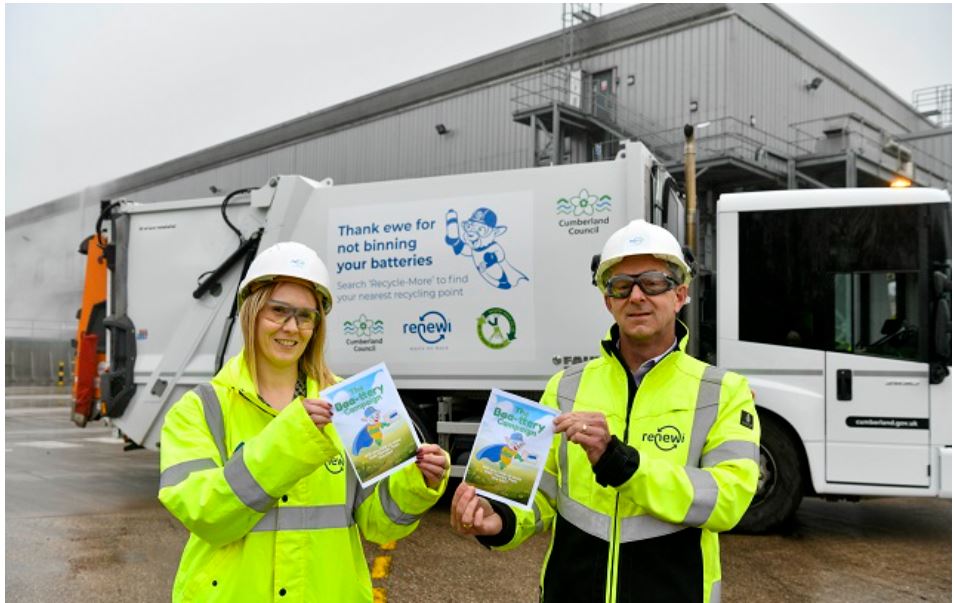However, collections of ‘other’ batteries – such as disposal batteries used in small appliances – may need to increase if future recycling targets are to be met.

Provisional figures published by the Environment Agency, show that a total of 7,775 tonnes of waste portable batteries were collected by compliance schemes throughout the first half of 2016.
With a collection target of 45% of the average annual amount of portable batteries placed onto the market by producers in 2014, 2015 and 2016 – likely to total around 16,413 tonnes for the year – the UK has achieved a provisional collection rate of around 22.4% for 2016 to date, the data suggests.
Lead acid
Of particular interest is the overall proportion of the target met via collections of ‘other’ chemistries of battery – typically made up of disposal household batteries – compared to ‘lead acid’ batteries, for example such as used in specialised equipment as rechargeable torches, and other areas such as security systems.
At the start of the year a change in the classification of portable batteries came into effect, to address concerns that incorrect classification of lead acid batteries could be skewing data on the number of portable batteries collected for recycling.

Recyclers had claimed that much of the overall target being met by non-obligated batteries. In 2012, 83% of the UK’s battery recycling obligation was met through the collection of lead acid batteries, despite them making up just 8% of the new batteries placed onto the market.
Portable batteries are the only category to which a recycling target has been attached – and battery recyclers had argued that as they are often unaware of the original use of some lead acid batteries, it is impossible to determine if they fall into the industrial or portable classification.
Classification
As a result of this, the government had introduced a weight threshold on batteries from January 2016 – meaning that those weighing more than 4kg could no longer be classed as portable when placed onto the market by producers or received for recycling (see letsrecycle.com story).
Following the change, battery compliance schemes had warned that greater effort would be needed to increase the capture of lighter portable in order to meet the targets.
The regulatory change appears to have had an effect on the collection of batteries for recycling, with the figures for the first two quarters of 2016 indicating that 2,027 tonnes of lead acid batteries were collected in the first three months of the year, followed by 1,996 tonnes in the following three-month period. This compares to 10,625 tonnes collected throughout 2015 – roughly 2,600 tonnes per quarter.
On top of this, recorded collections of ‘other’ battery chemistries increased – totalling 1,517 tonnes between January and March, and 1,950 tonnes between April and June.

This represents a vast increase on the tonnage of ‘other’ battery types recorded as collected in previous years, and while lead acid batteries continue to make up the bulk of those collected, the amount collected as an overall proportion of portable batteries appears more closely in line with the volume placed onto the market.
In 2015, a total of 3,929 tonnes of batteries were collected throughout the year – an average of close to 982 tonnes per quarter.
Reduction
Speaking to letsrecycle.com, Robbie Staniforth, commercial manager at compliance scheme ecosurety, acknowledged that the overall proportion of lead acid batteries had come down, and he claimed that this is unlikely to fall further.
He said: “Lead acid has come down again a little bit and I think it may come down in the following quarter as well but I think the effect of the regulatory change has been seen.
“[Lead acid] is still a reasonably high proportion, but it is lower than what it was. Our inclination is that that is now the true base level.”
Commenting on the figures Adrian Hawkes, policy director for compliance scheme Valpak, said that the reduction in volumes of lead acid had been in line with expectations – but added that more work may need to be done to increase collections of other battery types.
He said: “Lead acid is just about in line with what we expected – we thought there would be roughly 8,000 tonnes throughout the year and it is about half way towards that so it is significantly less than in previous years.
“The other factor is that there has been an increase in other battery collections since quarter one. We suspect that is probably not an increase in collections but schemes might be using material stored from previous years and using that to match the reduction [in lead acid batteries].”
“Communications and increasing the visibility of collection facilities are likely to be required, as well as making it easier for consumers to recycle batteries.”
Adrian Hawkes
Valpak
On increasing collections of other battery types, Mr Hawkes noted that an increasing focus on collecting batteries from householders may be necessary.
He said: “The targets are not expected to change, but we have to make up the reduction in lead acid tonnage [through collections of other battery chemistries] and whilst there is still some material from previous years, that will only last a short time.
“Communications and increasing the visibility of collection facilities are likely to be required, as well as making it easier for consumers to recycle batteries.”
Proportion
In the battery sorting sector – Greg Clementson, managing director, G&P Batteries, warned that the overall proportion of lead acid batteries collected for recycling remains high – and warned that unless collections of other batteries pick up in the second half of the year, targets could be challenging.
He said: “In my opinion there remains an anomaly in the amount of lead acid, which hasn’t dropped by the proportion that I would have expected it would.
“My other concern is that if you look at the data, something like 60% of the material coming on the market is in the second half of the year. I have concerns that we will be some way off achieving the target for the total year based on the performance so far. In the third quarter of the year there has not been a pick-up in demand.
“We have had inevitably a drop in the amount of evidence available, but the amount available from non-lead batteries has improved, that is a positive certainly. Whether we can grow and maintain that remains to be seen. The infrastructure to do it is there to do it, but in my opinion we are still reliant on lead acid.”











Subscribe for free